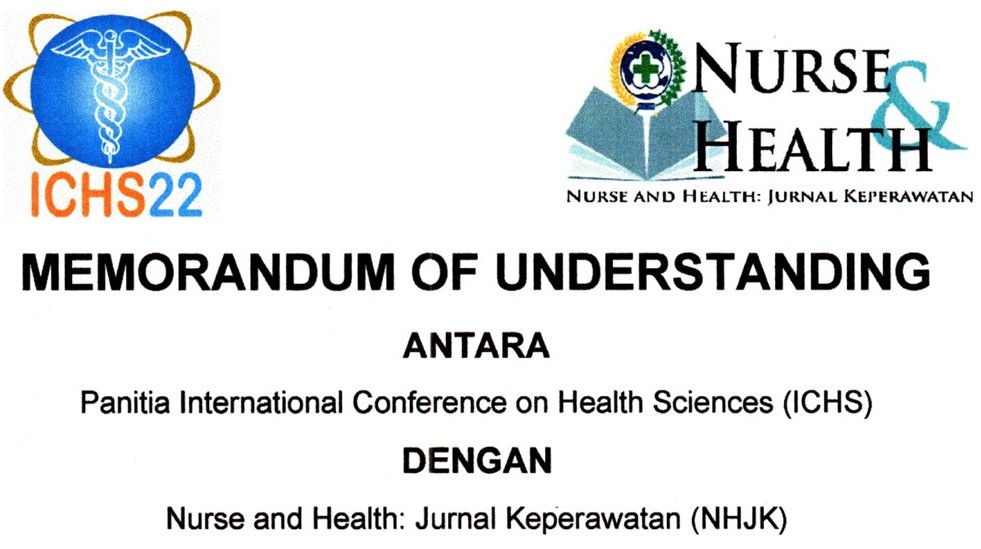RELATIONSHIP BETWEEN FRIENDSHIP QUALITY AND ANXIETY IN FACING PHYSICAL CHANGES DURING PUBERTY IN FEMALE STUDENTS OF ELEMENTARY SCHOOL
Abstract
Background: Friends have the most influence in an individual's life. Friendship contains specific elements, such as trust, openness, sharing of ups and downs, and learning to deal with conflict. Puberty children try to have friends to share their feelings with others. Because with good friendship will reduce minimize the anxiety they experience at puberty (Wulandari, Kustriyani, & Fiyannti, 2018). Objectives: The Purpose of this study to determine the relationship between friendship quality and anxiety facing the physical changes of puberty in female students at SDIT Bakti Insani Sleman Yogyakarta. Methods: This study was a quantitative research with survey method, with a total sampling of 47 respondents. Research instruments with questionnaires, the questionnaire was adopted from Marvienda (2007), researchers used a measuring instrument in the form of a friendship quality scale and anxiety scale of female students during puberty. Data analysis using person product moment. Results: The result showed respondents age 100% at the early adolescent stage, 74.5% respondents had not yet menarche, 25.5% had menarche, the average value of friendship quality was 84.89 and the average anxiety value was 63.91. The results showed that there was no relationship between the quality of friendship with anxiety facing physical changes during puberty in female students at SDIT Bakti Insani Sleman Yogyakarta (r = -.38, p-value = .802). Conclusion: This study found that the majority of respondents were in their early teens and only a small proportion had experienced menarche. The average value of high friendship quality shows that the quality of friendship is also high and the average value of anxiety in the medium shows moderate anxiety. The implications of this study are as input or consideration in preparing adolescent reproductive health starting from the beginning of puberty at school. Keywords: Quality of Friendship, Anxiety, Puberty, Physical ChangesDownloads
References
Ali, M., & Asrori, M. (2018). Psikologi Remaja (cetakan 13). Jakarta: Bumi Aksara.
Burnett, S., Thompson, S., Bird, G., & Blakemore, S. J. (2011). Pubertal development of the understanding of social emotions: Implications for education. Learning and individual differences, 21(6), 681-689.
Coleman, J.C. (1980). The Nature of Adolescence. New York: Methuen.
Danim, S., & Khairil. (2014). Psikologi Pendidikan (Dalam Perspektif Baru) (Cetakan 3). Bandung: Alfabeta.
Dapodikdasmen Kemdikbud. (2018). Data Pokok SD Islam Terpadu Bakti Insani. Retrieved December 19, 2018, from http://dapo.dikdasmen.kemdikbud.go.id/sekolah/FD80D3AC3E6811EB037A.
Hardianingsih, D., & Fitriana, H. (2017). Tingkat kecemasan remaja menghadapi perubahan fisik masa pubertas pada siswi MTS pondok pesantren As-Salafiyyah yogyakarta (Doctoral dissertation, Universitas' Aisyiyah Yogyakarta).
Hidayah, N., & Palila, S. (2018). Kesiapan Menghadapi Menarche pada Remaja Putri Prapubertas Ditinjau dari Kelekatan Aman Anak dan Ibu. Psympathic: Jurnal Ilmiah Psikologi, 5(1), 107-114.
Hurlock, E. B. (1980). Psikologi Perkembangan. Suatu Pendekatan Sepanjang Rentang Kehidupan. Jakarta: Erlangga.
Kartono, K. (1992). Psikologi Wanita, Jilid I. Bandung: Mandar Maju.
Kuruzović, N. (2015). Characteristics of adolescents’ friendship relations: a longitudinal study of the quality, length, stability and reciprocity. FACTA UNIVERSITATIS-Philosophy, Sociology, Psychology and History, 14(02), 115-129.
Mappiare, A. (1982). Psikologi Remaja. Surabaya: Usaha Nasional.
Marvienda, D. (2007). Kecemasan anak perempuan pada masa pubertas menghadapi perubahan fisik ditinjau dari kualitas pertemanan (Doctoral dissertation, Prodi Psikologi Unika Soegijapranata Semarang).
Mussen, A. (1982). Perkembangan dan Kepribadian Anak. Alih Bahasa: F.X. Budiyanto. Jakarta: Arcan.
Mutiara, A. R., Yusmansyah, Y., & Mayasari, S. (2018). Hubungan Antara Interaksi Teman Sebaya Dengan Prestasi Belajar. ALIBKIN (Jurnal Bimbingan Konseling), 6(1).
Putra, I. G. N. E., Pradnyani, P. E., Pragmaningtyas, M. S., Kusumadewi, N. M. C., & Widarini, N. P. (2016). Faktor-faktor yang mempengaruhi umur menarche (menstruasi pertama) pada siswi sekolah dasar di Kota Denpasar. BIMKMI, 4(1), 31-38.
Saputri, F. A. P. (2016). Tingkat Kecemasan Remaja Putri yang Mengalami Masa Pubertas di SMP Negeri 1 Selorejo Kabupaten Blitar. Jurnal Ners dan Kebidanan (Journal of Ners and Midwifery), 3(3), 298-303.
Sitompul, S. (2018). Hubungan antara Kesamaan (Similarity) dengan Pembentuk Persahabatan pada Remaja di Kelurahan VII Tarutung.
Toghyani, M., & Akrami, N. (2011). Mental profile comparison of male and female adolescents during puberty. Procedia-Social and Behavioral Sciences, 30, 1635-1640.
Venter, E., & Uys, H. (2018). Group therapy for early adolescent relationship problems between girls. International Journal of Adolescence and Youth, 00(00), 1–12.
Widyastuti, Y., Rahmawati, A., & Purnamaningrum, E. Y. (2014). Kesehatan Reproduksi (cetakan 5). Yogyakarta: Fitramaya.
Wulandari, P., Kustriyani, M., & Fiyannti, A. (2018). Hubungan Dukungan Teman Sebaya Dengan Kecemasan Remaja Putri Dalam Menghadapi Perubahan Fisik Pada Masa Pubertas Kelas VIII Di SLTPN 31 Semarang. Jurnal Ilmu Keperawatan Maternitas, 1(1), 1–5.
Authors who publish with Nurse and Health: Jurnal Keperawatan agree to the following terms:
- Authors retain copyright licensed under a Creative Commons Attribution-NonCommercial 4.0 (CC BY-NC 4.0), which allows others to remix, tweak, and build upon the authors' work non-commercially, and although the others' new works must also acknowledge the authors and be non-commercial, they don't have to license their derivative works on the same terms.
- Authors are permitted and encouraged to post their work online (e.g., in institutional repositories or on their website) prior to and during the submission process, as it can lead to productive exchanges, as well as earlier and greater citation of published work (See The Effect of Open Access). Authors can archive pre-print and post-print or publisher's version/PDF.








_resize1.jpg)















